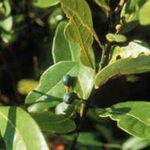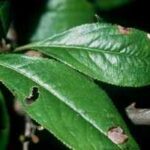Want even more trees that will stretch on for a mile? Below are good selections to help you choose the best one for your application from those that get above 30 feet tall. Planting instructions and thorough descriptions of each tall growing tree are given.
Fagus grandifolia Ehrh. (American Beech)
Kingdom Plantae – Plants
Subkingdom Tracheobionta – Vascular plants
Superdivision Spermatophyta – Seed plants
Division Magnoliophyta – Flowering plants
Class Magnoliopsida – Dicotyledons
Subclass Hamamelidae –
Order Fagales –
Family Fagaceae – Beech family
Genus Fagus L. – beech
Species Fagus grandifolia Ehrh. – American beech
A slow growing tree that prefers partial shade and well drained soil. It will get 50-80 feet tall and have a spread of 40-60 feet. It has golden brown fall color and its fruits (nuts) will attract birds and squirrels. It has flowers that will appear just after the leaves. Beech has sensitivity to heat and drought.
Fraxinus americana L. (White Ash)
Kingdom Plantae – Plants
Subkingdom Tracheobionta – Vascular plants
Superdivision Spermatophyta – Seed plants
Division Magnoliophyta – Flowering plants
Class Magnoliopsida – Dicotyledons
Subclass Asteridae –
Order Scrophulariales –
Family Oleaceae – Olive family
Genus Fraxinus L. – ash
Species Fraxinus americana L. – white ash
This moderate growth Ash prefers full sun. It will get up to 60-80 feet tall and 50-70 feet wide. It has yellow/red/purple fall foliage and flowers in panicles. The seeds are a good food source for birds and it’s a larval plant for tiger swallowtail and mourning cloak butterflies. It is a good shade tree and is soil adaptable. Propagation is by seed or bud grafting.
Gordonia lasianthus (L.) Ellis (Loblolly Bay)
Kingdom Plantae – Plants
Subkingdom Tracheobionta – Vascular plants
Superdivision Spermatophyta – Seed plants
Division Magnoliophyta – Flowering plants
Class Magnoliopsida – Dicotyledons
Subclass Dilleniidae –
Order Theales –
Family Theaceae – Tea family
Genus Gordonia Ellis – gordonia
Species Gordonia lasianthus (L.) Ellis – loblolly bay
This tree will get up to 70 feet tall and have a 10-15 foot spread. The trunk gets to 3 inches in diameter. It will have bright white flowers in the late spring and be fragrant. It is an evergreen that prefers full sun and is often found growing with Sweetbay.
Halesia tetraptera Ellis (Mountain Silverbell)
Kingdom Plantae – Plants
Subkingdom Tracheobionta – Vascular plants
Superdivision Spermatophyta – Seed plants
Division Magnoliophyta – Flowering plants
Class Magnoliopsida – Dicotyledons
Subclass Dilleniidae –
Order Ebenales –
Family Styracaceae – Storax family
Genus Halesia Ellis ex L. – silverbell
Species Halesia tetraptera Ellis – mountain silverbell
This tree gets up to 30-40 feet tall and needs a spacing zone of 20-30 feet tall. It prefers full sun to partial shade for optimum growth. It has a most interesting bark pattern, with its tiny fissures. There are creamy bell-like white flowers in mid spring to early summer. You may propagate this by stem cuttings.
Juglans cinerea L. (Butternut, White Walnut)
Kingdom Plantae – Plants
Subkingdom Tracheobionta – Vascular plants
Superdivision Spermatophyta – Seed plants
Division Magnoliophyta – Flowering plants
Class Magnoliopsida – Dicotyledons
Subclass Hamamelidae –
Order Juglandales –
Family Juglandaceae – Walnut family
Genus Juglans L. – walnut
Species Juglans cinerea L. – butternut
This slow growing walnut reaches a height of 40-60 feet tall and a spread of 30-50 feet. It is soil adaptable but prefers full sun. In summer it will have green foliage changing to yellow leaves in the fall. It has edible fruits that are oblong and covered with hair. It makes a good lawn tree. Folklore has this in use for eczema and headaches.
Juniperus virginiana L. var. silicicola (Small) J. Silba (Southern Red Cedar)
Kingdom Plantae – Plants
Subkingdom Tracheobionta – Vascular plants
Superdivision Spermatophyta – Seed plants
Division Coniferophyta – Conifers
Class Pinopsida –
Order Pinales –
Family Cupressaceae – Cypress family
Genus Juniperus L. – juniper
Species Juniperus virginiana L. – eastern redcedar
Variety Juniperus virginiana L. var. silicicola (Small) J. Silba – southern redcedar
This aromatic evergreen tree gets up to 40 feet high and needs a spacing zone of 12-15 feet. It loves to be planted in full sun. Expect a nice winter showing out of this cedar. If you want to try to propagate this specimen, try with herbaceous stem cuttings. BEWARE: All parts of this cedar are poisonous if ingested.
Liquidambar styraciflua L. (Sweetgum)
Kingdom Plantae – Plants
Subkingdom Tracheobionta – Vascular plants
Superdivision Spermatophyta – Seed plants
Division Magnoliophyta – Flowering plants
Class Magnoliopsida – Dicotyledons
Subclass Hamamelidae –
Order Hamamelidales –
Family Hamamelidaceae – Witch-hazel family
Genus Liquidambar L. – sweetgum
Species Liquidambar styraciflua L. – sweetgum
Sweet gum grows between 50-150 feet tall and is a good long-lived addition to most any garden. The leaves are star-shaped with 5 lobes. This tree is shade intolerant and can survive in most any soil. Flowers bloom from March to May and fruits from September to November. For fall foliage it’s breathtaking with red and yellow color. Sweet gum wood is used for lumber and plywood. Traditionally it is known as “copalm balsam” and is a substitute medicinally for storax. Other uses include chewing gum and as a perfume agent in soaps.
Magnolia acuminata (L.) L. (Cucumber-tree)
Kingdom Plantae – Plants
Subkingdom Tracheobionta – Vascular plants
Superdivision Spermatophyta – Seed plants
Division Magnoliophyta – Flowering plants
Class Magnoliopsida – Dicotyledons
Subclass Magnoliidae –
Order Magnoliales –
Family Magnoliaceae – Magnolia family
Genus Magnolia L. – magnolia
Species Magnolia acuminata (L.) L. – cucumber-tree
This magnolia is so named because its fruit looks like a cucumber. It reaches a height and a spread of 50-80 feet. A fast grower with wide branches, it prefers full sun or partial shade. Its fragrant green white flowers will appear in spring and come fall will have yellow bronze color.
Magnolia grandiflora L. (Southern magnolia)
Kingdom Plantae – Plants
Subkingdom Tracheobionta – Vascular plants
Superdivision Spermatophyta – Seed plants
Division Magnoliophyta – Flowering plants
Class Magnoliopsida – Dicotyledons
Subclass Magnoliidae –
Order Magnoliales –
Family Magnoliaceae – Magnolia family
Genus Magnolia L. – magnolia
Species Magnolia grandiflora L. – southern magnolia
One of the best known trees in the south, the magnolia is a fast growing evergreen that will mature at around 60-90 feet. It has large saucer-like white flowers that are classically fragrant. Blooms appear from April to June. Magnolias are best in rich moist soils and will tolerate some shade. Plant this for a showy classic addition to your garden. Letting the leaves fall without raking provides natural ground mulch for the tree.
Nyssa aquatica L. (Water tupelo)
Kingdom Plantae – Plants
Subkingdom Tracheobionta – Vascular plants
Superdivision Spermatophyta – Seed plants
Division Magnoliophyta – Flowering plants
Class Magnoliopsida – Dicotyledons
Subclass Rosidae –
Order Cornales –
Family Nyssaceae – Sour Gum family
Genus Nyssa L. – tupelo
Species Nyssa aquatica L. – water tupelo
This can get up to 100 feet tall but will usually stay about 35-50 feet in height with a spread of 20-30 feet. This is a moderate growth tree and has a narrow open crown. Much wildlife will eat the fruits and it is a favored honey tree. Small green/white flowers will appear from March to April. It is a taproot tree and will be hard to transplant.


